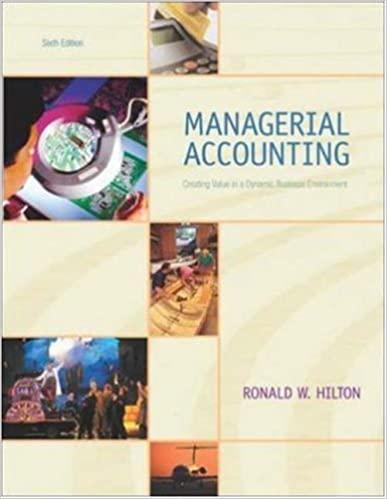Birmingham Bowling Ball Company (BBBC) uses a job-order costing system to accumulate manufacturing costs. The company's work-in-process
Question:
Birmingham Bowling Ball Company (BBBC) uses a job-order costing system to accumulate manufacturing costs. The company's work-in-process on December 31, 20x3. consisted of one job (no. 3088), which was carried on the year-end balance sheet at \($78,400.\) There was no finished-goods inventory on this date.
BBBC applies manufacturing overhead to production on the basis of direct-labor cost. Budgeted totals for 20x4 for direct labor and manufacturing overhead are \($2,100,000\) and \($2,730,000\) . respectively.
Actual results for the year follow.

Job no. 3088 was completed in January 20x4; there was no work in process at year-end. All jobs produced during 20x4 were sold with the exception of job no. 3154, which contained direct-material costs of \($78,000\) and direct-labor charges of \($42,500\) . BBBC charges any under- or overapplied overhead to Cost of Goods Sold.
Required:
1. Determine the company's predetermined overhead application rate.
2. Determine the additions to the Work-in-Process Inventory account for direct material used, direct labor, and manufacturing overhead.
3. Compute the amount that BBBC would disclose as finished-goods inventory on the December 31, 20x4, balance sheet.
4. Prepare the journal entry needed to record the year's completed production.
5. Compute the amount of under- or overapplied overhead at year-end, and prepare the necessary journal entry to record its disposition.
6. Determine BBBC's 20x4 cost of goods sold.
7. Would it be appropriate to include selling and administrative expenses in either manufacturing overhead or cost of goods sold? Briefly explain.
Step by Step Answer:

Managerial Accounting Creating Value In A Dynamic Business Environment
ISBN: 9780071113144
6th Edition
Authors: Ronald W Hilton





